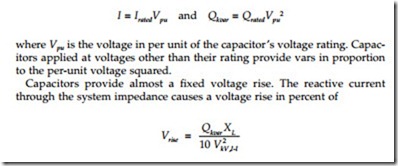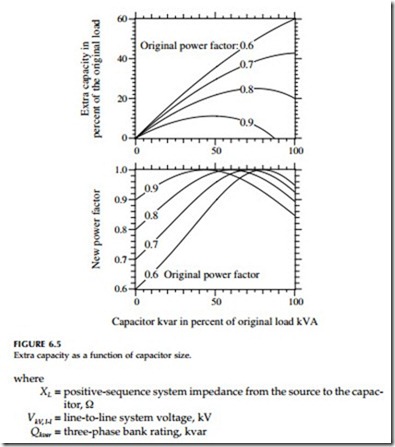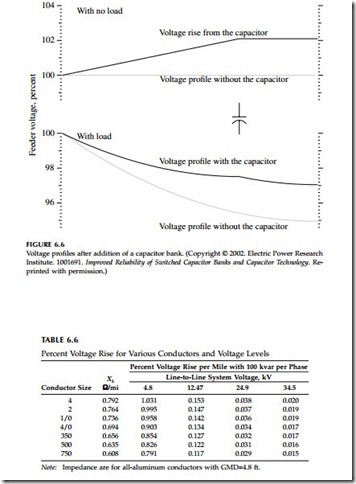Voltage Support
Capacitors are constant-impedance devices. At higher voltages, capacitors draw more current and produce more reactive power as
While this equation is very good for most applications, it is not exactly right because the capacitive current changes in proportion to voltage. At a higher operating voltage, a capacitor creates more voltage rise than the equation predicts.
Since the amount of voltage rise is dependent on the impedance upstream of the bank, to get the voltage boost along the entire circuit, put the capacitor at the end of the circuit. The best location for voltage support depends on where the voltage support is needed. Figure 6.6 shows how a capacitor changes the voltage profile along a circuit. Unlike a regulator, a capacitor changes the voltage profile upstream of the bank.
Table 6.6 shows the percentage voltage rise from capacitors for common conductors at different voltages. This table excludes the station transformer
impedance but still provides a useful approximation. Inductance does not change much with conductor size; the voltage change stays the same over a wide range of conductor sizes. For 15-kV class systems, capacitors increase the voltage by about 0.12% per mi per 100 kvar per phase.
On switched capacitor banks, the voltage change constrains the size of banks at some locations. Normally, utilities limit the voltage change to 3 to 4%. On a 12.47-kV circuit, a three-phase 1200-kvar bank boosts the voltage 4% at about 8 mi from the substation. To keep within a 4% limit, 1200-kvar banks must only be used within the first 8 mi of the station.


